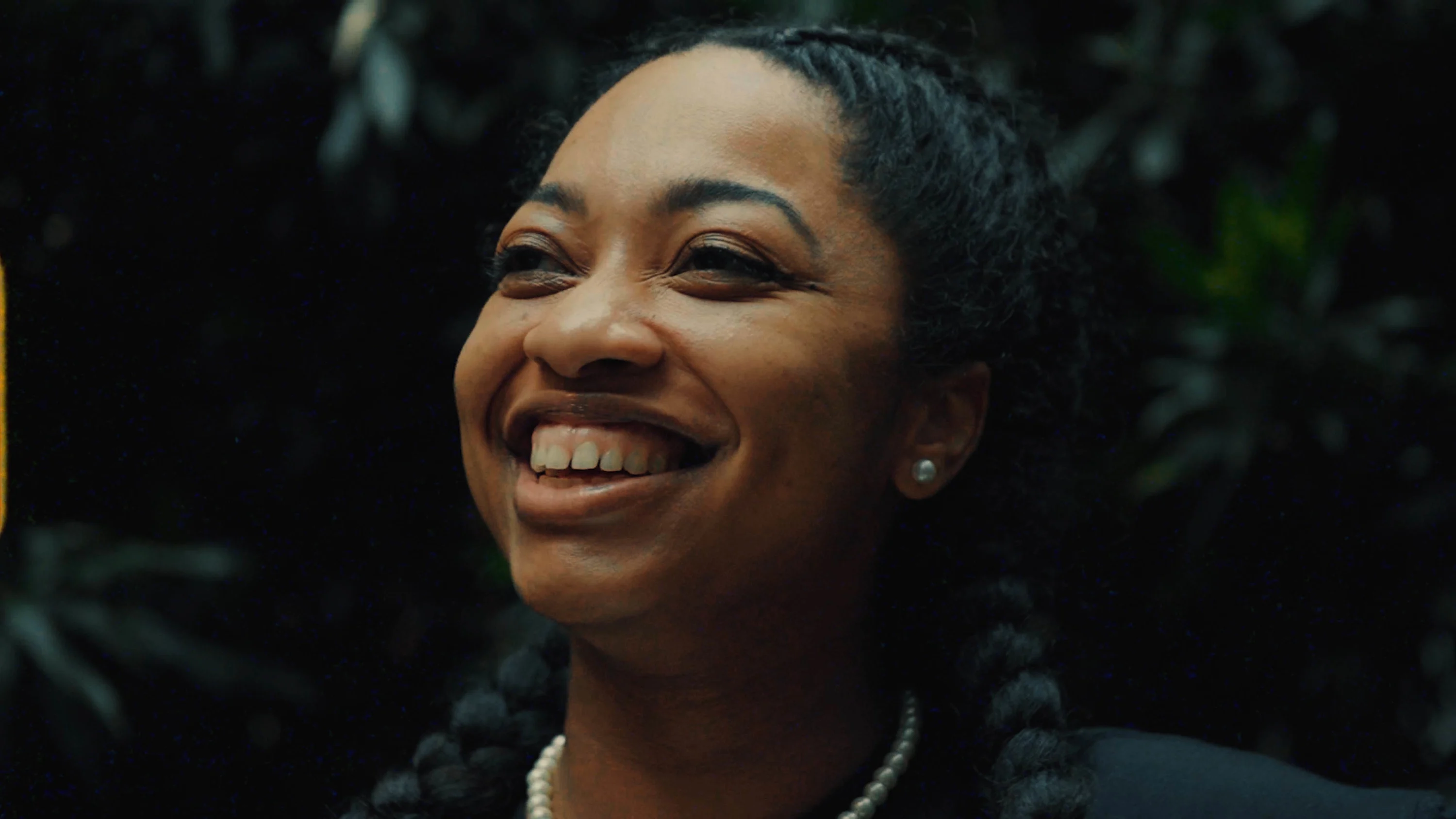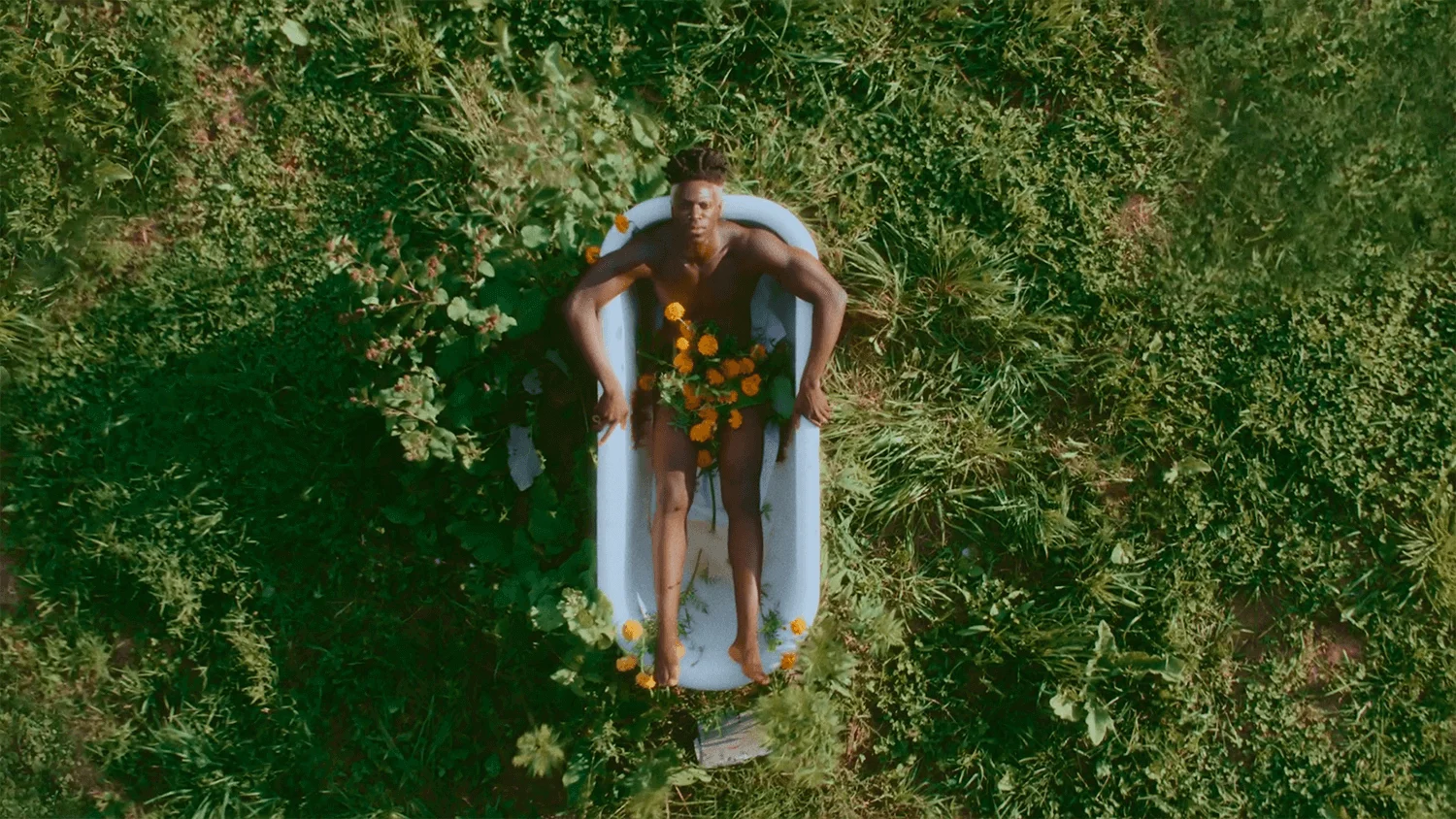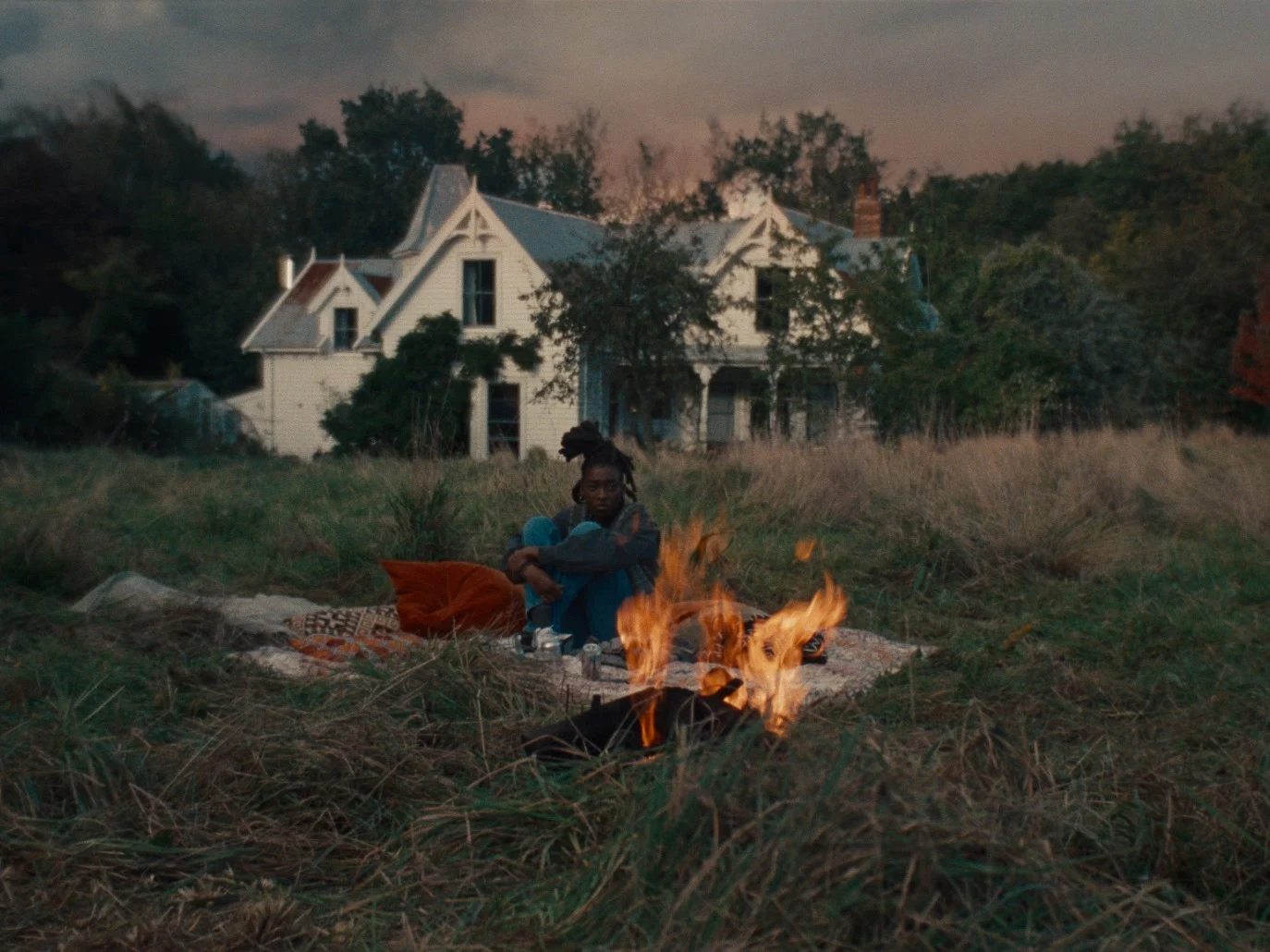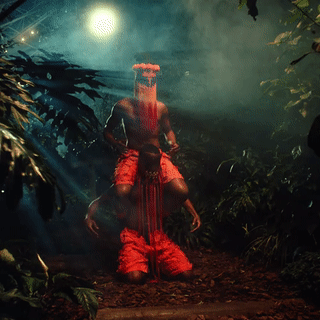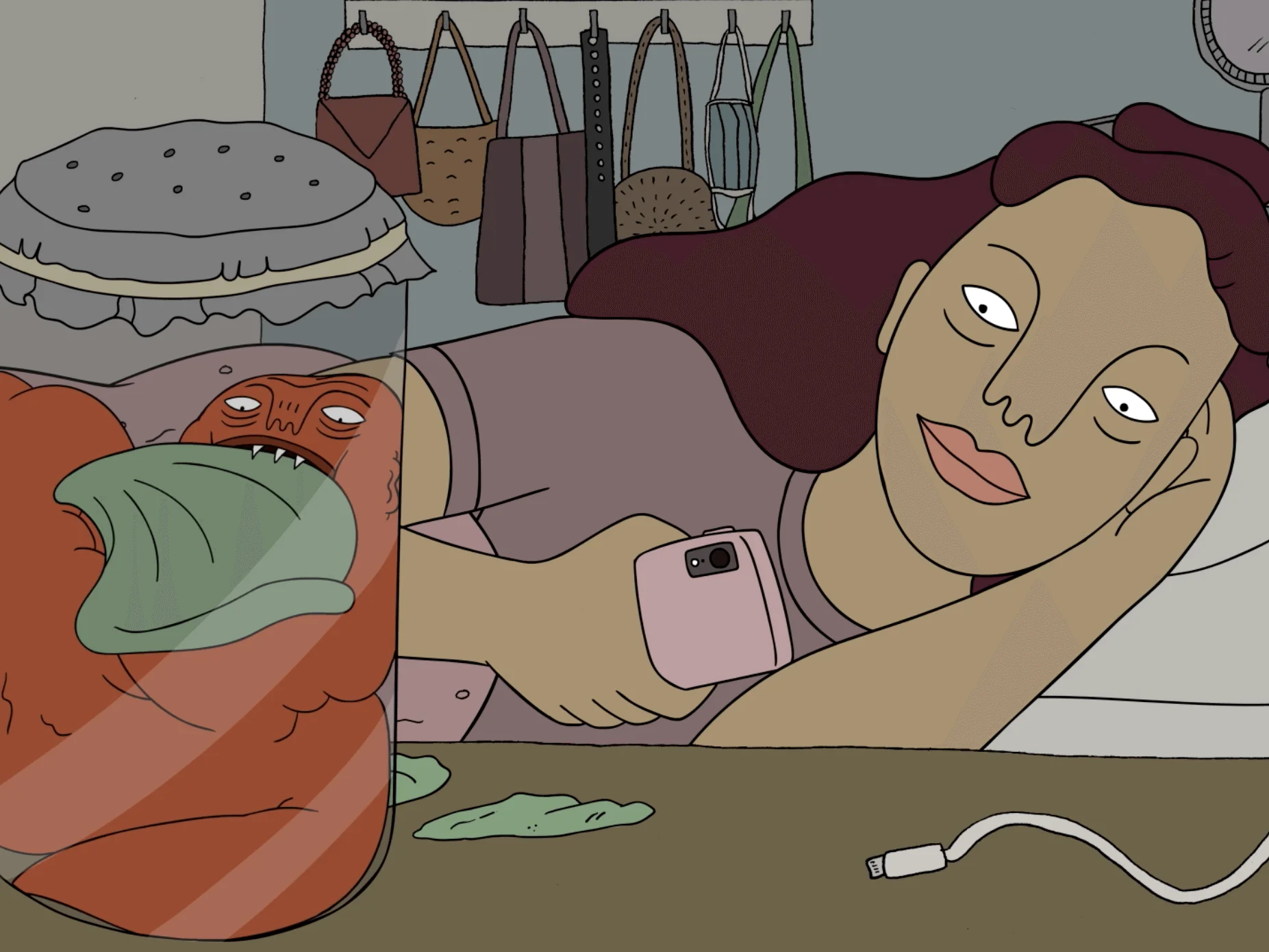
Run — Go behind the scenes of Alex Prager’s latest film “Run”
Cover: Excerpt from "Run" (2022)
Go behind the scenes of Alex Prager’s latest film “Run”
Quickly, ask yourself: “What are you afraid of?” On a daily basis, we’re all faced with a variety of threats—individual or societal, real or perceived, emotional or physical—and must continuously decide whether to face them head on or flee while we still can. Our response to such dangers in a climate of uncertainty is at the heart of Alex Prager’s surreal new film, “Run,” the second of her projects supported by WePresent. Louise Benson speaks to the artist about fear, the future, and the truths we avoid.
Behind the scenes of “Run”
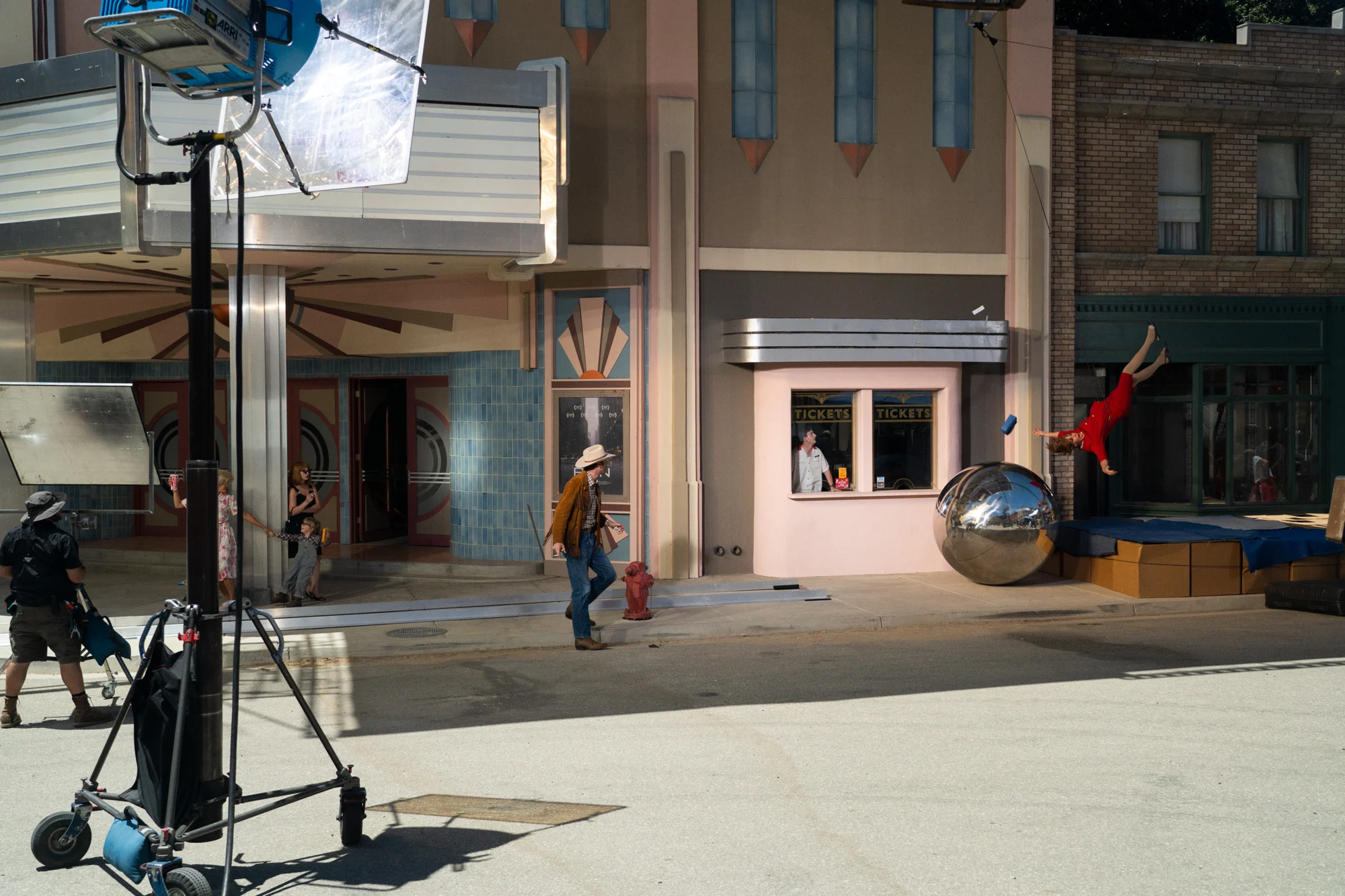
“Run!” The simple command is enough to trigger a primal sense of fear and flight, conjuring an immediate sense of danger. From horror movies to playful childhood antics, it is a word of warning that contains multitudes in what is left unsaid. From what, exactly, are we running?
For artist Alex Prager, it captures a pervasive sense of cultural anxiety that she has seen settle over the world around us as our lives change at such speed that we can barely keep up. Could there be a way to escape from the fears and instability brought about by these global challenges? Perhaps, as she suggests in her new film, the only answer could be to make a break for it.
“Run,” shot this summer at Disney’s Golden Oaks Ranch in Newhall, California, concludes Prager’s art series, which began with “Part One: The Mountain” in March 2022. In “The Mountain,” an assorted cast of archetypal characters—from a cowgirl to an air hostess, an office clerk to a nymph—were shown suspended in mid-air against a dusty desert landscape, wearing nothing more than a pair of dainty white socks. In “Run,” she transports some of these characters, along with an array of new companions, to an all-American town where they find themselves confronted by a giant metal sphere careening through the quaint streets.
I’m trying to speak directly to a more magical state of mind. It’s about feeling with your heart rather than your head.
“‘The Mountain’ was purely exploring the emotional states of being in a situation that's so extreme,” Prager explains over the phone. “‘Run’ explores the mechanics that got us there.” While both films were conceived during the fear and uncertainty of the pandemic, she is clear that “Run” tackles a different kind of emotional upheaval. “You can fill in the blank [with] any fear that felt overwhelming or out of our power of control. That's what it's symbolic of, and it's a state that I think we've all been tiptoeing around or trying to ignore.”

Prager first has the idea for the surreal story of “Run” when she came across a song of the same name by the musician Ellen Reid, part of a larger opera released in 2019, while driving her son to school one day. “We were listening to it, and something about it struck the exact chords inside of me that acknowledged what we had been going through in the past few years.” The song is built upon a dramatic chorus of voices which rise to an intense crescendo as they chant a single word again and again: “Run.”
“The emotion encapsulated in this song was so on the nose, so perfect, and just what I needed to hear in that moment,” Prager says. “There was something really cathartic about that.” She began to invent an imaginary world for the song and describe it to her son while they listened to it on repeat. “It was almost like I was telling him a story, like I was reading a book,” she laughs.
She vowed to bring the images that she conjured to life, and “Run” was born. Reid’s song scores the film, along with music by Philip Glass, lending it an unsettling undercurrent in which just about anything could happen. Melodrama ripples through it like a flash of bare skin, as much Greek tragedy as it is absurdist drama.
It’s symbolic of a state that I think we’ve all been tiptoeing around or trying to ignore.
The visual metaphor of a “massive pinball world,” as Prager puts it, feels perfectly suited to her particular brand of luscious Americana. It conjures the classic arcade game from days gone by, in which small levers are used to keep the ball bouncing from side to side within a miniaturized, cartoonish scene. “The film has a giant reflective ball rolling through a town smashing things up,” she says. “That’s how the world has been feeling for a while now to me. When you look at it in a larger sense, we're just all in this together, hoping the ball doesn't come directly at us.” After a dramatic pause, Prager laughs: “And if it does, we fucking run.”
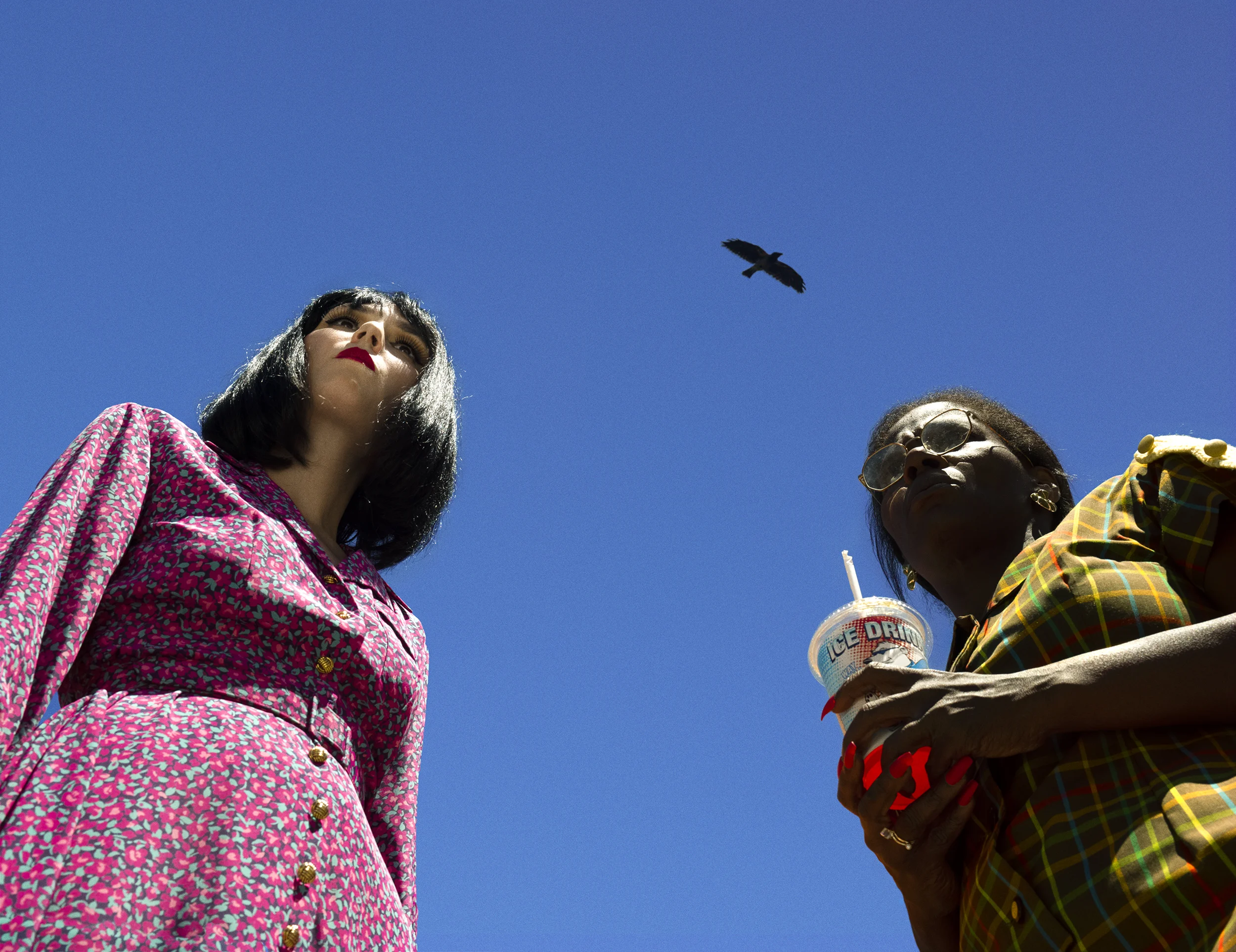
The pinball rattles around curbside benches and postboxes, between florists and local grocery stores, transforming the familiar and yet anonymous town into a violent playground. “It's not real,” she muses, “but it is reflecting something that's very real. It makes it a little easier to digest and confront, because I think a lot of these things that we've been experiencing in the world have been very difficult to work out.”
Prager wanted the setting to “feel like an ordinary day anywhere in the USA.” It is part Lynchian suburbia, part “The Truman Show,” where everything looks a little too perfect, and the bubble is just waiting to burst. She chose to use a set rather than travel to a real location, which adds to the uncanny sensation that pervades the film. “There's something about it that feels very safe and unassuming,” she says.
Katherine Waterston stars as the film’s protagonist, the prim Cecily Waters, pretty in pink with a dramatic blonde wig. She runs casual errands and gossips idly before encountering the enormous pinball as it careens towards her.
Prager herself maintains a strong involvement in all aspects of costume in her work, in close collaboration with her long-time costume designer Callan Stokes. “I knew that this character needed to have this certain look with Katherine in the pink dress,” she says. “That was a very strong image. I couldn't get out of my mind that this was the person that needed to be leading us through this pinball world.”

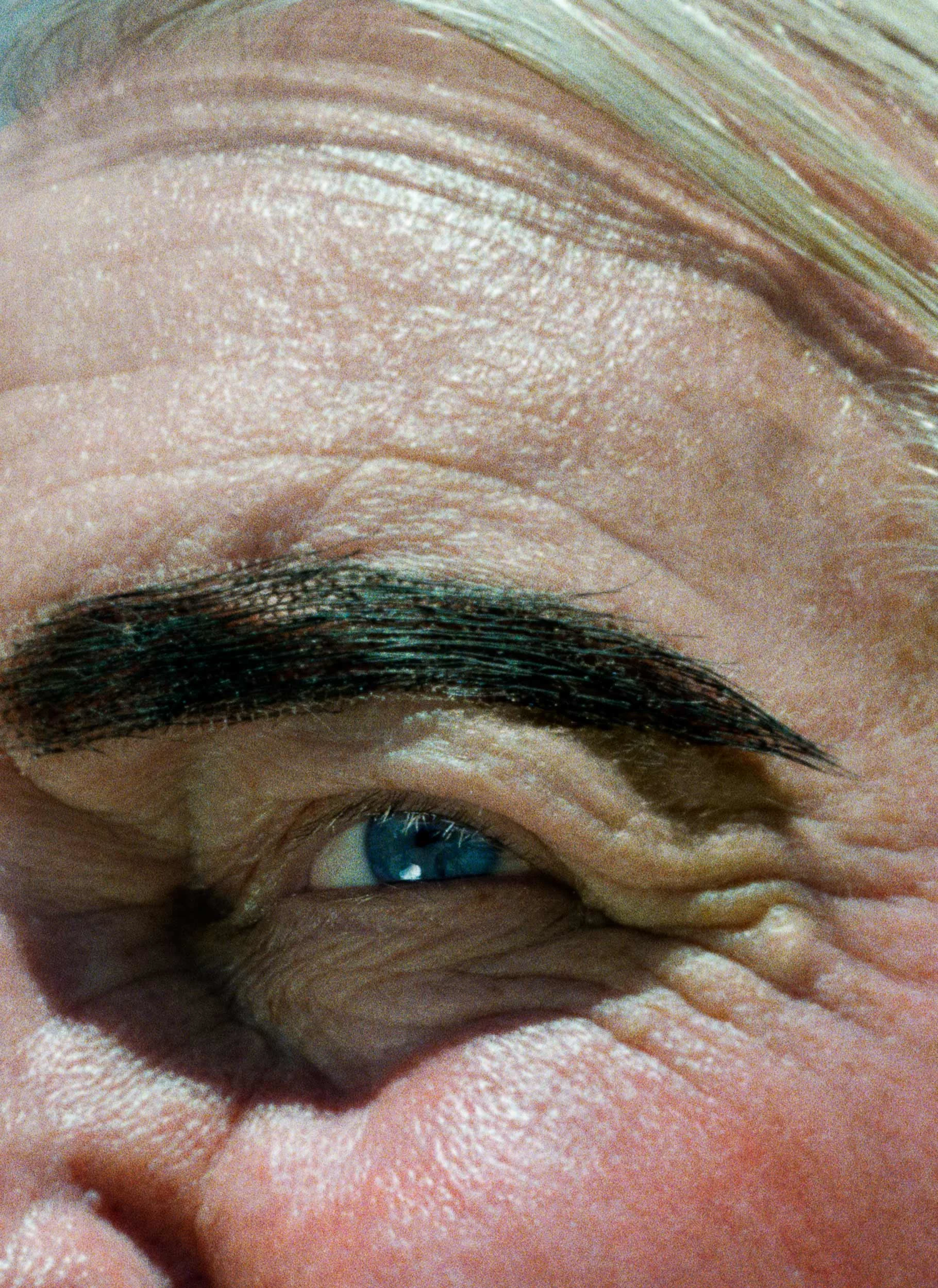
Pink, Prager muses, emerges as the defining color of the film and the photographs that she shot as part of the project. In one image, a woman dressed in a hot pink pencil skirt falls from the sky; in another, a close-up of a woman in heavy eyeliner sees her blow a sticky pink bubble from synthetic gum. This Technicolor world forms a fitting framework for the bigger questions that arise in “Run.”
“My work is always primarily about the emotions and breaking us down to our primal selves,” Prager says. “And that's why I love to use Technicolor, the bright primary colors. I love to break it down visually to almost a children's world, something that's so simple and basic, that it becomes fundamental and primal.”
That’s how the world has been feeling for a while now to me. We’re just all in this together, hoping the ball doesn’t come directly at us.
Splashes of pink against a cornflower blue sky segue into the final sequence, in which the people of the town lie flattened upon the ground in a rainbow of colorful costumes, each one crushed under the pinball, before they find themselves finally restored to life once again.

At the heart of all of Prager’s work is the very stuff which makes us human, from her early cinematic images of crowds, in which individual characters look surprisingly alone, to the evocative films that she has gone on to create, which cut to the heart of modern America. She captures the heartbreak and the anxieties, the joy and the loneliness, with all the surprising intensity of stumbling upon a half-forgotten box of photographs of your first love.
From the personal to the sociopolitical, she is concerned with the subtler ways in which we interact with one another even on a daily, granular level. “In America, I think everyone's on edge, and we’re constantly being told that the future is dark and scary,” she says. “But it hasn't happened yet, so it's just not true. We're constantly making up the future, and it is really a mix between the subconscious, dreams and imagination.”

We’re constantly making up the future, and it is really a mix between the subconscious, dreams and imagination.
This slippage between reality and dreams is what Prager grasps at in “Run,” in which our greatest fears are shown to be nothing more than an unwieldy pinball worth dodging. Just as the shiny ball reflects each character back at themselves, so too does it hold a mirror up to each and every viewer, asking us to reconsider our most deeply held preconceptions about the world around us. “Life is a constant play of walking through the surreal and the real,” she concludes. “I'm trying to speak directly to a more magical state of mind. It’s about feeling with your heart rather than your head.”










